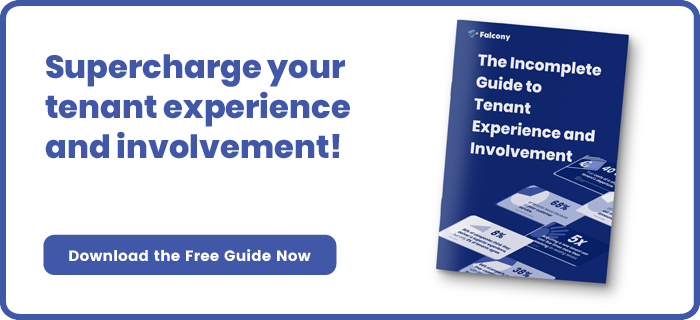How to Optimise Your Portfolio in Commercial Real Estate?
In the world of commercial real estate (CRE), the need for strategic portfolio optimisation has never been more critical.
With market dynamics continually shifting due to economic factors, emerging trends, and changing demand for spaces, it is crucial for investors and managers to adapt. Optimising a portfolio in commercial real estate involves not only maximising returns but also managing risks and ensuring long-term growth.
Here’s a structured approach to optimising your commercial real estate portfolio:
Assess Your Current Portfolio
The first step in any optimisation strategy is to evaluate your existing portfolio. This includes reviewing the performance of each asset, its income generation, market value, and capital appreciation. You should also consider how each property fits within the broader strategic objectives of your investment goals.
Key questions to ask include:
-
Are there any underperforming assets?
-
How well are the properties diversified in terms of type (e.g., office, retail, industrial, or mixed-use)?
-
What is the geographic spread of your assets?
-
Are your properties concentrated in markets showing signs of decline or stagnation?
A thorough assessment will give you a clear idea of where improvements can be made.
Diversify Your Portfolio
Diversification is a cornerstone of successful portfolio optimisation. In commercial real estate, this means spreading your investments across different property types, locations, and risk profiles. By reducing the concentration of your assets in any single area, you mitigate exposure to market downturns or changes in tenant demand that might affect a specific sector.
Consider diversifying:
-
Property types: While office spaces and retail properties have traditionally been the focus, sectors like logistics and industrial real estate have experienced significant growth, especially with the rise of e-commerce.
-
Geographic location: If your assets are concentrated in one city or region, consider expanding into different markets to reduce your exposure to local economic fluctuations.
-
Risk levels: A blend of high-risk, high-reward assets with stable, low-risk investments can create a more resilient portfolio.
Focus on Sustainability and ESG Factors
Environmental, social, and governance (ESG) factors are becoming increasingly important in commercial real estate investment. Tenants and investors alike are looking for properties that meet sustainability standards and align with broader environmental goals.
Optimising your portfolio involves staying ahead of these trends by investing in energy-efficient buildings, those with a strong sustainability record, or properties in green-certified developments. Not only do these assets often attract premium tenants and higher rental yields, but they also tend to hold their value better over time.
Additionally, implementing ESG principles can make your portfolio more attractive to institutional investors who prioritise sustainable investment opportunities.
Leverage Technology and Data Analytics
In today’s data-driven world, technology is a powerful tool for optimising real estate portfolios. Advanced data analytics can provide deep insights into market trends, tenant behaviour, property performance, and potential areas for improvement.
Utilising property management software, for instance, can streamline operations, from lease tracking to maintenance schedules, ensuring that your assets are always performing at their peak. Additionally, using predictive analytics can help you forecast market conditions and make better-informed investment decisions.
Data-driven insights can also improve tenant relations and reduce vacancy rates by identifying potential tenant needs and preferences.
Refine Your Financing Strategy
One of the most important aspects of portfolio optimisation is managing your financing strategy. Commercial real estate investments often require significant capital outlay, and leveraging debt efficiently can help maximise returns. However, too much debt can expose your portfolio to risk.
It is important to review your financing arrangements regularly to ensure you are using the most cost-effective financing options available. Explore different loan structures, interest rates, and repayment terms. If interest rates rise, you may want to lock in fixed-rate financing to protect against future increases.
Regularly Review Market Trends
Commercial real estate is subject to cyclical trends, and the market is ever-changing. To stay ahead, it’s vital to keep a close eye on economic conditions, interest rates, market demand, and emerging property sectors.
Investors should also monitor regulatory changes that could affect the value or desirability of certain property types, such as zoning laws or tax incentives for energy-efficient buildings. Identifying these trends early allows you to reposition your portfolio to take advantage of new opportunities or avoid potential pitfalls.
Rebalance Your Portfolio Periodically
Optimisation is not a one-time task. A key part of a successful strategy is regularly rebalancing your portfolio. This could involve selling off underperforming assets, acquiring new properties, or adjusting the allocation of your investments.
Rebalancing ensures that your portfolio remains aligned with your long-term investment objectives and adapts to market conditions. It is also an opportunity to review tenant leases, update rental terms, or renovate properties to maintain their appeal and value.
Maximise Operational Efficiency
Optimising a real estate portfolio isn't just about choosing the right assets; it's also about improving operational efficiency. This can involve:
-
Streamlining property management processes
-
Minimising maintenance costs
-
Enhancing tenant services
-
Improving lease management and rent collection
Reducing operating costs without compromising on service quality can significantly improve the profitability of your properties.
Conclusion
Optimising a portfolio in commercial real estate requires a proactive approach, constant evaluation, and a willingness to adapt to changing market conditions. By diversifying assets, leveraging technology, staying on top of market trends, and focusing on sustainability, you can create a more resilient and profitable portfolio. With careful planning and ongoing adjustments, your real estate investments can continue to yield strong returns and withstand economic fluctuations.
By implementing these strategies, you’ll be well on your way to optimising your commercial real estate portfolio for both short-term success and long-term growth.
If your organisation is looking for a 360° tenant experience tool to involve all employees, service providers and tenants to improve the quality of your operations, have a look at the 30-day free trial of Falcony | Tenant Portal:
We are building the world's first operational involvement platform. Our mission is to make the process of finding, sharing, fixing and learning from issues and observations as easy as thinking about them and as rewarding as being remembered for them.
By doing this, we are making work more meaningful for all parties involved.
More information at falcony.io.

Related posts
What are the hottest topics in Tenant Experience right now?
As property owners and managers continue to navigate the evolving landscape of commercial...
The Impact of Smart Building Solutions on Tenant Satisfaction
The rapid advancement of technology has transformed the commercial real estate industry.
Smart...
How to Create Tenant Demand in Commercial Real Estate?
In a competitive commercial property market, attracting and retaining tenants is a critical success...







